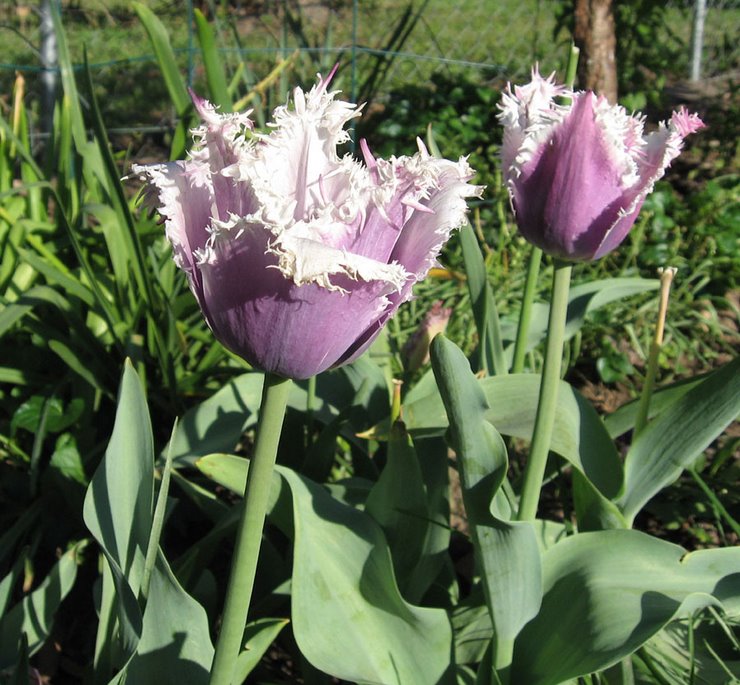 | |
| Lavender and white snapdragons |
Perennial, commonly sold as annual
Full sun, 10 inches - 4 feet
The snapdragon is a cool-weather plant, so now with the pleasant fall temperatures, my snapdragons are blooming profusely again. Since they can tolerate some frost, I plant them early in the spring, generally a couple of weeks before the last spring frost date. They bloom beautifully all spring and into the early summer. Then I trim them back, water them well, and see little from them until fall, when most will resume flowering.
Snapdragons are available in a wide range of colors, just about everything but blue, as well as softly-shaded bi-colors. They bloom along a flower spike, opening gradually from the bottom upwards. They have a light fragrance, and attract butterflies. Snapdragons come in various heights: dwarf ones that grow to about 10 inches, medium at about 18-24 inches, and tall that may reach 3-4 feet. I generally prefer the dwarf snaps, as they fit better into my flowerbeds, don't require staking as do the taller ones, and come in the largest choice of colors.
Snapdragons are generally listed as preferring full sun, but here in the hot summers of south-central Kansas, I find they last better if I place them to receive morning sun and in the afternoon get some shade. They flourish in well-drained, fertile soil, so I plant them with plenty of compost. Well-drained soil will help prevent root rot. Keep them well-watered, but be sure to water under them, rather than from overhead, as they tend to have problems with rust. Spacing them to allow adequate air circulation will also help to prevent this problem.
Deadheading will encourage your snapdragons to continue flowering. Some gardeners leave a few flowers to mature at the end of the season, to allow seeds to form. Snapdragons will self-sow, though the new plants may flower less than the parent plants. In mild regions, the entire plant may overwinter if covered with mulch. Here in Zone 6, I cut them back, mulch
lightly with leaves, and many of them come back the next spring. They
may flower less after the first year, so many people prefer to start
with new plants each year. If you wish to save the seeds, allow the pods to dry on the plant, then break them open to collect the seeds. Save them in an envelope for spring, or you may winter-sow them, which means you toss the seeds out in the late fall or even in the winter. Most will germinate in the spring.
Snapdragons have long been a cottage garden favorite, as the petals form a mouth. By pressing gently on the sides of the flower, the mouth opens and closes. Do supervise smaller children playing with snapdragons, as all parts of the plant are toxic if ingested.
- - - - - - - - - -
At the top of posts about plants, you will notice the "allergy index scale" rating for each plant I discuss. The Ogren Plant Allergy Scale rates the allergy potential of a plant, but of course does not indicate whether you or anyone else actually is allergic to it. In this scale, 1 is the best rating, with the least potential to cause allergic reactions; and 10 is the worst rating, with the most potential to cause allergic reactions. Because snapdragons are rated 1, as low-allergy as a plant can be, I plant them generously in my garden without concern for causing allergic reactions.


1 comment:
It took me time to read all the tips, but I clearly loved the post. It proved to be very helpful to me and I'm certain to all of the commenters here!
Post a Comment